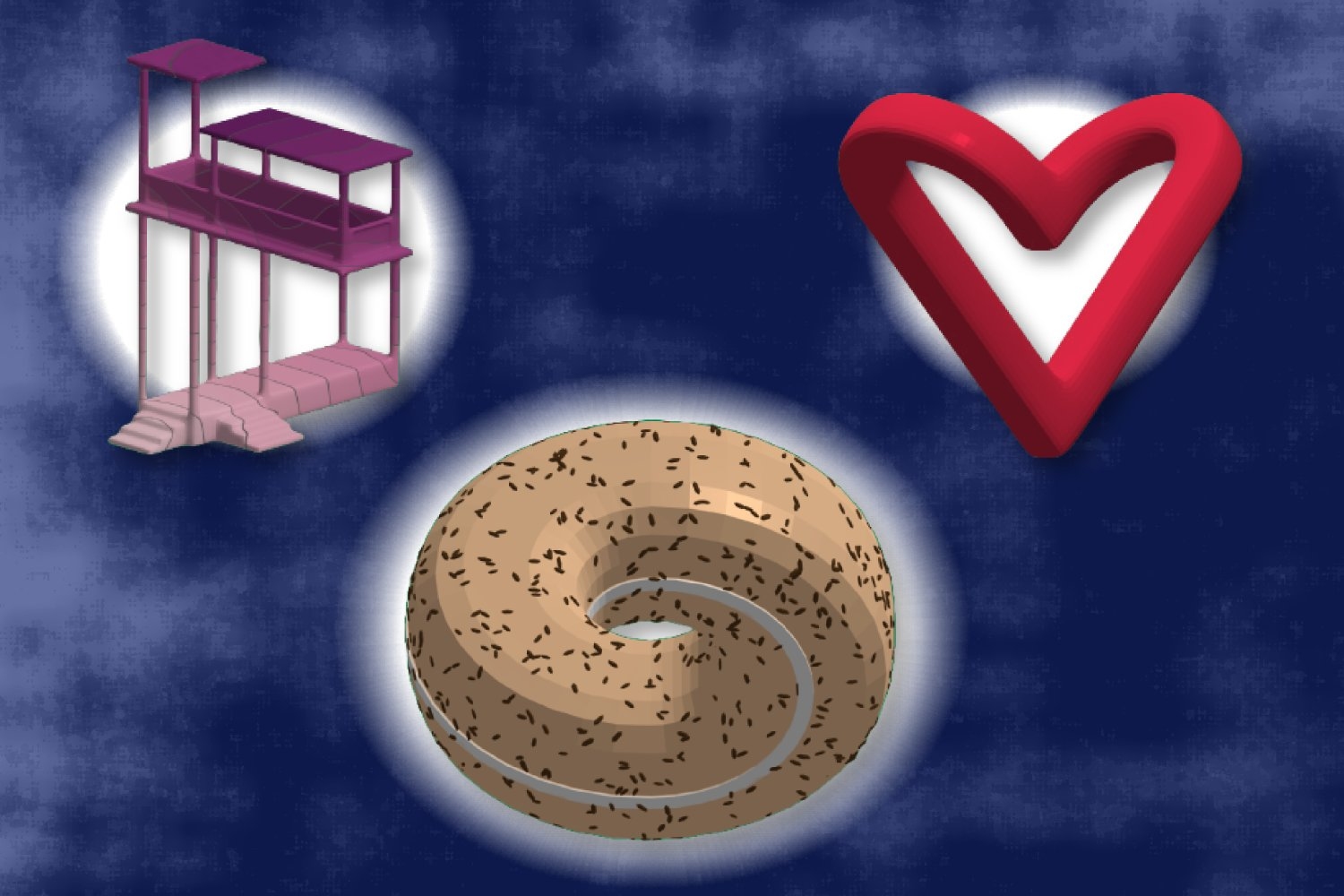
M.C. Escher’s artwork is a gateway into a world of depth-defying optical illusions, featuring “impossible objects” that break the laws of physics with convoluted geometries. What you perceive his illustrations to be depends on your point of view — for example, a person seemingly walking upstairs may be heading down the steps if you tilt your head sideways.
Computer graphics scientists and designers can recreate these illusions in 3D, but only by bending or cutting a real shape and positioning it at a particular angle. This workaround has downsides, though: Changing the smoothness or lighting of the structure will expose that it isn’t actually an optical illusion, which also means you can’t accurately solve geometry problems on it.
Researchers at MIT’s Computer Science and Artificial Intelligence Laboratory (CSAIL) have developed a unique approach to represent “impossible” objects in a more versatile way. Their “Meschers” tool converts images and 3D models into 2.5-dimensional structures, creating Escher-like depictions of things like windows, buildings, and even donuts. The approach helps users relight, smooth out, and study unique geometries while preserving their optical illusion.
This tool could assist geometry researchers with calculating the distance between two points on a curved impossible surface (“geodesics”) and simulating how heat dissipates over it (“heat diffusion”). It could also help artists and computer graphics scientists create physics-breaking designs in multiple dimensions.
Lead author and MIT PhD student Ana Dodik aims to design computer graphics tools that aren’t limited to replicating reality, enabling artists to express their intent independently of whether a shape can be realized in the physical world. “Using Meschers, we’ve unlocked a new class of shapes for artists to work with on the computer,” she says. “They could also help perception scientists understand the point at which an object truly becomes impossible.”
Dodik and her colleagues will present their paper at the SIGGRAPH conference in August.
Making impossible objects possible
Impossible objects can’t be fully replicated in 3D. Their constituent parts often look plausible, but these parts don’t glue together properly when assembled in 3D. But what can be computationally imitated, as the CSAIL researchers found out, is the process of how we perceive these shapes.
Take the Penrose Triangle, for instance. The object as a whole is physically impossible because the depths don’t “add up,” but we can recognize real-world 3D shapes (like its three L-shaped corners) within it. These smaller regions can be realized in 3D — a property called…
Disclaimer
We strive to uphold the highest ethical standards in all of our reporting and coverage. We 5guruayurveda.com want to be transparent with our readers about any potential conflicts of interest that may arise in our work. It’s possible that some of the investors we feature may have connections to other businesses, including competitors or companies we write about. However, we want to assure our readers that this will not have any impact on the integrity or impartiality of our reporting. We are committed to delivering accurate, unbiased news and information to our audience, and we will continue to uphold our ethics and principles in all of our work. Thank you for your trust and support.
Website Upgradation is going on. For any glitch kindly connect at 5guruayurveda.com


